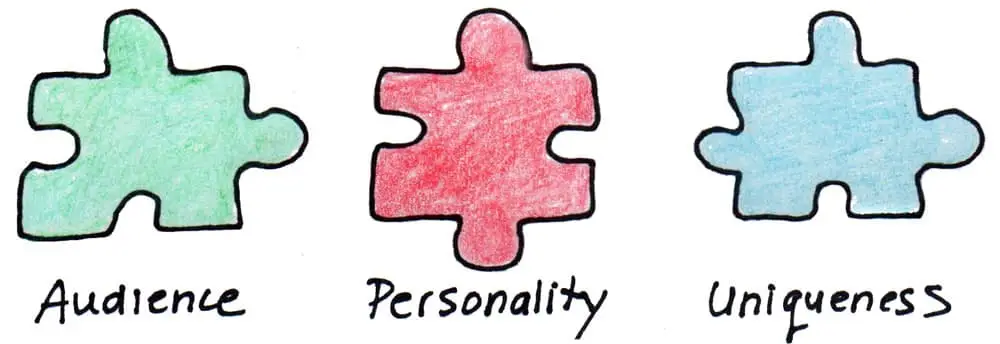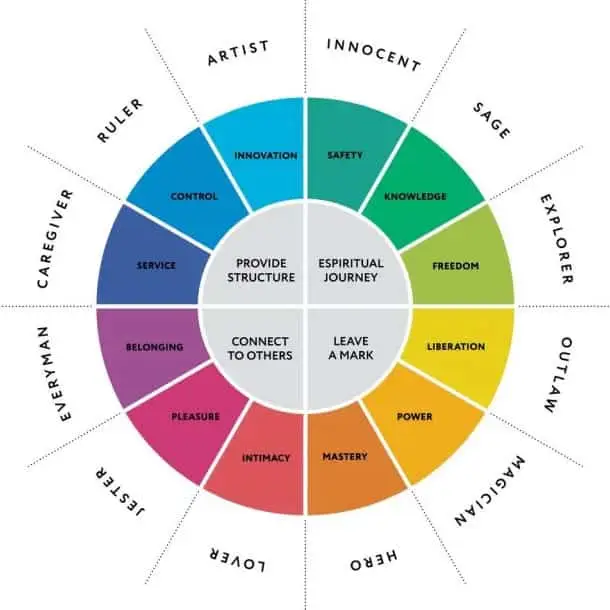Your brand is built on a great story. So, how are you effectively sharing it?
In my last article on visual storytelling, I covered the need to identify your WHY to create clear, consistent, and unique messaging that resonates with your target audience. We also discovered three different approaches to visual storytelling: stock photography, brand photography, and illustrations.
Didn’t get a chance to read part one yet? You can read it here!
At this point, you’re excited! You’ve started piecing together your brand story, and want to take the next step, but can’t quite decide which visual direction is best for both you and your audience.

To help clarify your brand’s visual story, here are three key pieces you’ll want to identify and fit together before taking your story online.
1. Identify your target audience
I can’t say this enough when it comes to building the foundation of your business: you need to understand who you serve best so you can learn to effectively communicate with them.
Think of your audience as the main character in your brand story and start with the basics.

Ask yourself:
- Where do they live?
- What do they look like?
- Where do they work?
- What do they like to do for fun?
- Are they single or married with kids?
Putting together a high-level overview of your audience will help you understand what logical and emotional challenges they may be facing that your business can help solve.
Let’s say you are a nonprofit organization that provides opportunities and resources to underserved youth in the city.
What kind of external, logical problems might your audience of youth be facing?
- They are too young to access employment, and struggle finding work because they have no previous experience
- They are unable to find a job that allows them to also attend school
- They can’t find a place to live because landlords won’t rent to teenagers
Considering these real world problems, how might they be feeling?
- Anxious about how they’re going to pay for their next meal
- Stressed and helpless about access higher education and carving out a successful life for themselves
- Lonely and scared about not having a roof over their head
By understanding where your audience is in their journey, you can start planning out how to empathetically communicate with them, and what you need to communicate so they feel compelled to take action with you.
2. Identify your brand archetypes
If your brand was a character in a film, how would they act and communicate?
Now that you’ve established who your ideal audience is, it’s time to clarify your brand archetypes.

Brand archetypes are easily recognized characters or personalities that allow you to communicate your value to your audience in a memorable and relatable way.
Depending on which brand archetype you choose, the way you communicate with your audience will be influenced by the motivations of your archetype.
Continuing our youth nonprofit example, perhaps your organization’s approach is to nurture the journey of your youth community, acting as The Caregiver. You gently guide youth towards safety and security.
Or, maybe you’re all about breaking the status quo and empowering youth to make informed decisions that lead them to bright futures as The Outlaw.
Your brand archetype is how you communicate with your audience (it’s literally your brand personality!), accompanied by your choice of tone.
Tone is your level of formality in how you communicate, which can change based on the context, such as communicating with different audiences or even different marketing channels.
If you’re speaking to an audience of teens, you’ll probably want to keep your tone very informal and conversational, making it easy for teens to read, understand, and take action. However, let’s say your audience is actually the counselors or teachers of the youth you are working with. In this case, maybe a casual business tone may be more appropriate.
Simply by understanding your audience and how to effectively communicate your value, you can identify which visual storytelling route will connect with them most.
3. Identify what your competitors are doing

No matter what you do, or what industry you work in, you will always have direct and indirect competitors. And you’ll want to identify who they are as soon as possible so you can ask yourself: what are they doing that’s working and where is there room for improvement?
Finding opportunities to stand out against your competitors is how you can easily differentiate yourself to your audience.
If your competitors are coming across as The Caregiver brand archetype, are using cold or generic stock imagery and aren’t seeing results, you know what not to do.
Visual storytelling should instantly capture your audience with visuals that accurately communicate how you help solve their problems.
Using logical and emotional appeal in every aspect of your story, from your content to your visuals, helps your audience make a decision about taking action with you.
Your visuals are what bring your brand story to life. Let’s help you build an effective, accessible, and result-driven marketing strategy.
Ready to get to work on building your brand’s visual story?
Learn to identify and connect the missing links in your brand messaging to create a clear, engaging, and memorable visual story that inspires your audience to take action.